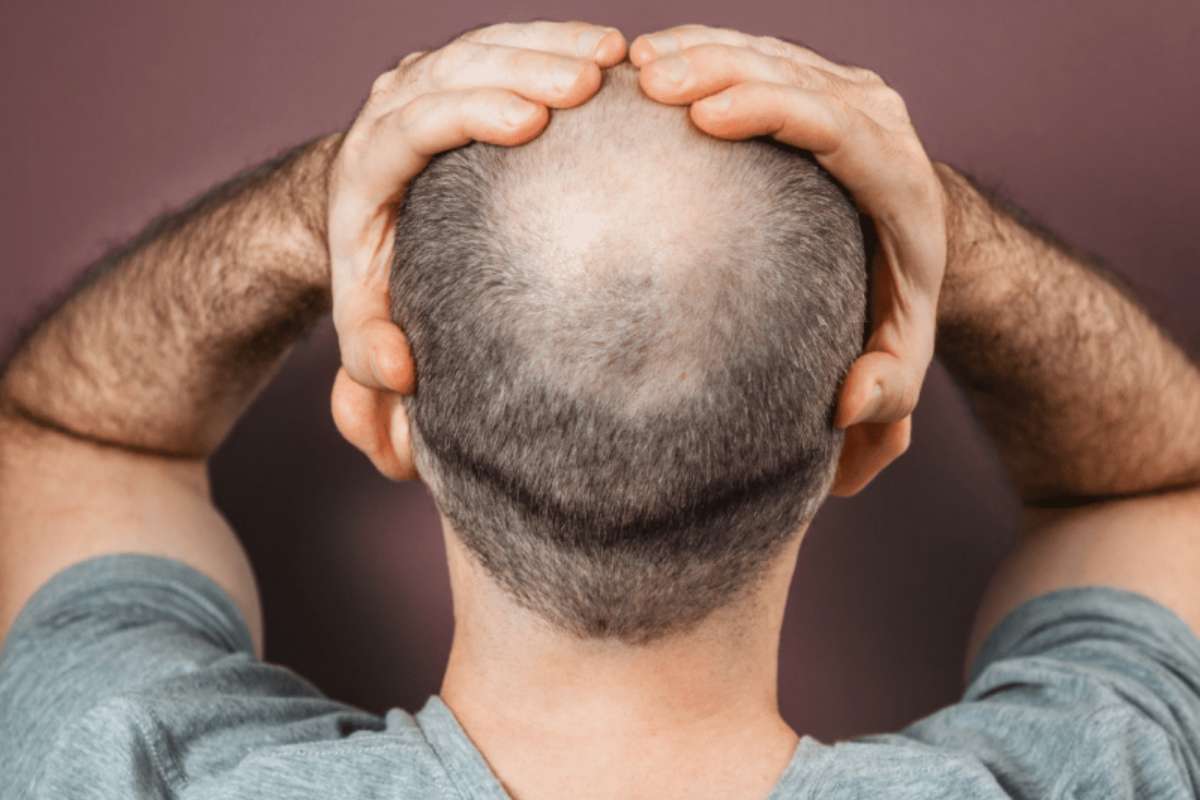You’ve just gotten your hair transplant and can’t wait to get your first haircut, but how long do you have to wait? Can you run right to the barber as soon as the bandages come off? Do you have to wait until everything is fully healed? Or do you have to wait until everything is grown out?
These are the most common questions we get when it comes to haircuts and hair transplants. Some people think the answer is obvious, but there are a lot of things to consider before getting a haircut after having a hair transplant.
The goal when receiving a hair transplant is to bring back the full head of hair that you once had when you were younger. For some people that means longer, fuller hair, but to others that might just mean fixing patchy or bald spots in your scalp that are more visible when you have short hair.
Whatever your goal is for wanting a hair transplant, it’s important to make sure you follow your doctors’ orders before you head to the barber or the salon. Getting your hair cut too soon could cause complications, or less-than-stellar results, from your transplant surgery.
How Long After a Hair Transplant Can I Get a Haircut?
When it comes to getting a haircut after your hair transplant procedure, the best thing you can do is take your doctor’s advice. They will know what is best for you and your situation and will be able to properly advise you on when it is safe to cut your hair again.
In general, we would advise that you do not cut your hair with scissors for at least 3-4 weeks after your hair transplant. In addition to that, we would also suggest not using clippers set to a 0-1 guard on the newly transplanted area for at least 1 month as well. You may use clippers around the donor area in order to blend it in if your donor area was shaved.
While it may seem that your hair follicles have taken a hold to your scalp, that is not always the case. Clippers can sometimes dislodge the newly transplanted follicles causing them to be pulled out. If this happens it will reduce the effectiveness of the hair transplant and you may not end up with the results you were expecting.
Understanding the Healing Process
After a hair transplant, your scalp goes through a healing process that involves the newly transplanted hair follicles integrating into their new environment. It’s crucial to allow sufficient time for this process to occur before subjecting your scalp to the stress of a haircut. The process of healing in the skin is called “remodeling.” Whether you split your head open falling from your skateboard as a kid, accidentally cut yourself with a kitchen knife, or have a surgical procedure that causes a full thickness wound to the skin, the healing process is the same. The dermis and epidermis will seal themselves shut very quickly and the skin will appear intact within a few weeks. However, under the surface there is a well-orchestrated dance of platelets, growth factors, macrophages, fibroblasts, and other cells that serve as the “clean up and construction crew,” Through this process, your body creates a new scaffolding of collagen & elastin fibers plus blood vessels and nerves in the new healed tissue that will hold your follicles in place and nourish your new growing hair. This process takes about 6 months to complete. So even when things look good on the surface, remember your body is still working hard underneath for healing to be complete. Thankfully your scalp is well vascularized (lots of good blood supply) and the healing is very predictable. In nearly all cases, Dr. Krejci finds the scalp is very cooperative in the healing process if you follow the post-op instructions.
Not everyone’s body will react the same way to surgery, so it’s important to follow-up your doctor’s instructions to ensure that everything is properly healed before getting your first haircut after the hair transplant.
Side Effects of Getting a Haircut Too Early After Surgery
Getting a haircut too soon after a hair transplant can have negative consequences. The newly transplanted hair follicles need time to firmly establish themselves in the scalp. Cutting or styling the hair too early can disrupt this process, leading to the follicles falling out prematurely and potentially hindering new hair growth.
In addition to possibly losing the follicles that were recently implanted, your scalp can also get infected, which can cause further damage. Infection can lead to redness and swelling, which can compromise the healing process and even cause new hair not to grow properly.
And while you’re less likely to see complications arise when using scissors to cut your hair after a hair transplant, using clippers should be avoided until everything is completely healed. Clippers are designed to vibrate back and forth quickly to cut the hair, without cutting the scalp, but if the clippers are not maintained properly, they can actually pull your hair out instead of cutting it.
How Long After Hair Transplant Can I Style My Hair?
While most FUE transplant procedures require cutting your hair down to a very short length, as least in the donor area, there is usually the question of ‘When can I get my hair cut?’ Understandably, patients want to style their hair and get back to “normal” as soon as possible. You need to hold off doing anything drastic to your scalp until the donor and transplanted areas have completely healed after a hair transplant.
Being impatient and heading to the salon too early can result in the follicles not embedding themselves properly into the transplanted area and could cause those follicles to fall out and never grow new hair.
In general, you’re going to want to wait at least 10-14 days before you do anything to your hair in terms of styling and products, but you can also get a simple haircut to even things out during this time.
During the first few weeks after your transplant, your doctor will have explicit instructions regarding care and cleaning of your scalp. Please follow your doctor’s advice. If you fail to follow their advice it could lead to transplanted follicles falling out or even infection on your scalp. The last thing you want is to have to redo the procedure or have to take medication to help clear up an infection or need additional treatment for other complications that may arise because you got impatient.
Remember, the reason you’re having a hair transplant is because your hair was already thinning, you can wait another few weeks for things to fully heal before trying a new hair style.
After 2-3 weeks, the stitches from a FUT procedure should have dissolved or been removed so your doctor will probably say it’s ok to start using styling products in your hair as well as it being ok to get a haircut.
You’ll still want to avoid blow drying, or using heat on your hair, as well as hair dye, bleach or perming products for at least a month after your surgery.
The other thing you may notice after your surgery is that the hair shafts from the new grafts that have been placed on your scalp will start shedding around 3-4 weeks after the surgery. This is normal. The roots or “bulbs” of the follicles that were transplanted remain in your scalp and will begin to grow new hair within the next 3 to 6 months.
With that being said, depending on the type of haircut you’re looking for, you may have to wait a little while before the hair is long enough to even warrant going to the barber or stylist.
Once your sutures are gone, or scabs have sloughed off, you’re 75% of the ways being completely healed. When your grafts start to grow and blend in with your native hair, consider yourself completely healed. This is at the 6-month mark. Really by the 2nd month post-transplant there is no concern over the type of hairstyle you wish to maintain as you await the growth of your newly transplanted hair. As the new hair grows in, you can feel free to wash, cut, and style your hair exactly as you had done when you had a naturally occurring full head of hair without any worries.
Haircuts and Hair Styles Post-Transplant Surgery
The primary reason for avoiding a haircut and different hair styles too soon after a hair transplant is to ensure the best possible results. Rushing the healing process can lead to complications such as follicle damage or infection and rarely bleeding, which can affect the overall outcome of the transplant.
By understanding the healing process and taking the necessary precautions, you’ll have many years to enjoy your new hair. Follow your doctor’s instructions and you’ll have no problems.







